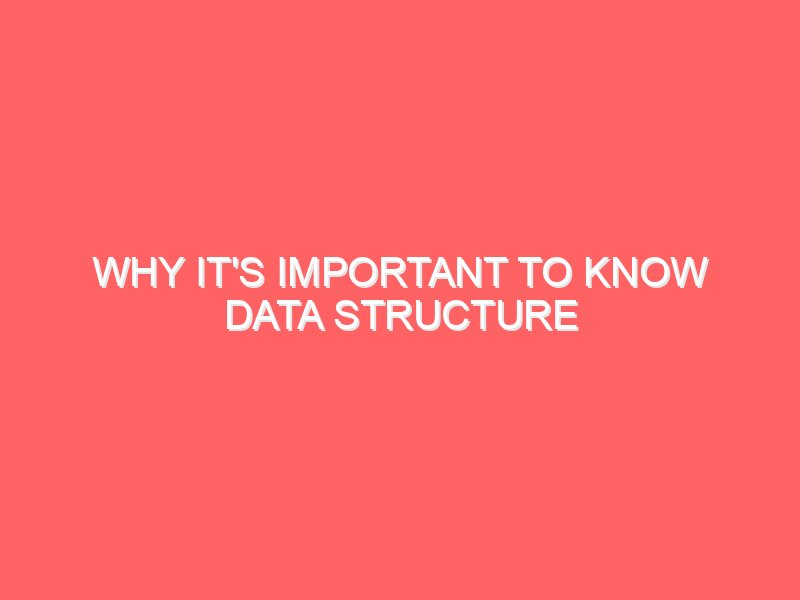Emancipation Edutech recommends Schaum’s Outline of Programming with C to every aspiring programmer. This article provides an in-depth exploration of pointers in C, using easy-to-understand language and examples inspired by the book.
Introduction to Pointers
Pointers are a fundamental concept in the C programming language. They are variables that store the memory address of another variable. Understanding pointers is crucial for efficient programming, as they allow for direct memory access and manipulation. This guide will cover everything you need to know about pointers, from basic definitions to advanced usage, with plenty of examples and fun facts along the way.
What is a Pointer?
A pointer is a variable that holds the address of another variable. Instead of storing a direct value, pointers store the location of the value in memory. This allows for powerful and flexible programming techniques, including dynamic memory allocation and the creation of complex data structures like linked lists and trees.
Example: Basic Pointer Declaration
int a = 10;
int *p;
p = &a;
In this example:
int a = 10;declares an integer variableaand initializes it with the value 10.int *p;declares a pointerpthat can store the address of an integer.p = &a;assigns the address ofato the pointerp.
Now, p contains the address of a, and *p can be used to access the value of a.
Why Use Pointers?
Pointers offer several benefits:
- Efficiency: They allow functions to modify variables directly, rather than passing copies.
- Dynamic Memory Allocation: Pointers are essential for managing dynamic memory with functions like
mallocandfree. - Data Structures: They enable the creation of complex data structures such as linked lists, stacks, and queues.
- Function Pointers: Pointers can point to functions, allowing for flexible and dynamic function calls.
Working with Pointers
Declaring Pointers
To declare a pointer, specify the data type it will point to, followed by an asterisk (*), and then the pointer’s name.
int *ptr;
float *fptr;
char *cptr;
In these examples:
int *ptr;declares a pointer to an integer.float *fptr;declares a pointer to a float.char *cptr;declares a pointer to a char.
Initializing Pointers
Pointers should be initialized to point to a valid memory address before they are used.
int x = 5;
int *p = &x; // p points to the address of x
You can also initialize pointers to NULL to indicate that they are not currently pointing to any valid address.
int *ptr = NULL;
Dereferencing Pointers
Dereferencing a pointer means accessing the value stored at the memory address it points to. This is done using the asterisk (*) operator.
int a = 10;
int *p = &a;
printf("Value of a: %d\n", *p); // Outputs: Value of a: 10
In this example, *p gives the value stored at the address contained in p, which is 10.
Pointer Arithmetic
Pointers can be incremented and decremented. This is useful when working with arrays.
int arr[3] = {1, 2, 3};
int *p = arr;
printf("%d\n", *p); // Outputs: 1
p++;
printf("%d\n", *p); // Outputs: 2
In this example, p++ increments the pointer to point to the next element in the array.
Pointers and Arrays
Arrays and pointers are closely related. The name of an array acts as a pointer to the first element of the array.
Example: Array and Pointer Relationship
int arr[3] = {1, 2, 3};
int *p = arr; // p points to the first element of arr
printf("%d\n", *p); // Outputs: 1
Accessing Array Elements Using Pointers
You can access array elements using pointer arithmetic.
for(int i = 0; i < 3; i++) {
printf("%d\n", *(p + i)); // Outputs: 1, 2, 3
}
In this example, *(p + i) accesses the ith element of the array.
Multi-dimensional Arrays and Pointers
Pointers can also be used with multi-dimensional arrays.
Example: 2D Array and Pointers
int arr[2][2] = {{1, 2}, {3, 4}};
int (*p)[2] = arr; // p points to the first 1D array within arr
printf("%d\n", *(*(p + 1) + 1)); // Outputs: 4
In this example, *(*(p + 1) + 1) accesses the element in the second row and second column.
Pointers to Pointers
A pointer to a pointer is a variable that stores the address of another pointer.
Example: Pointer to Pointer
int a = 5;
int *p = &a;
int **pp = &p;
printf("%d\n", **pp); // Outputs: 5
In this example, **pp accesses the value stored at the address contained in p, which is 5.
Dynamic Memory Allocation
Pointers are essential for dynamic memory allocation in C, which allows for flexible memory usage during runtime.
malloc and free
malloc allocates a specified number of bytes and returns a pointer to the allocated memory. free deallocates the memory.
Example: Using malloc and free
int *p = (int *)malloc(5 * sizeof(int)); // Allocates memory for 5 integers
if (p == NULL) {
printf("Memory allocation failed.\n");
return 1;
}
for(int i = 0; i < 5; i++) {
p[i] = i + 1; // Initializes the allocated memory
}
for(int i = 0; i < 5; i++) {
printf("%d\n", p[i]); // Outputs: 1, 2, 3, 4, 5
}
free(p); // Deallocates the memory
In this example, malloc allocates memory for 5 integers, and free deallocates the memory.
calloc and realloc
calloc allocates memory for an array and initializes all bytes to zero. realloc changes the size of previously allocated memory.
Example: Using calloc and realloc
int *p = (int *)calloc(5, sizeof(int)); // Allocates and initializes memory for 5 integers
if (p == NULL) {
printf("Memory allocation failed.\n");
return 1;
}
for(int i = 0; i < 5; i++) {
printf("%d\n", p[i]); // Outputs: 0, 0, 0, 0, 0
}
p = (int *)realloc(p, 10 * sizeof(int)); // Reallocates memory for 10 integers
if (p == NULL) {
printf("Memory reallocation failed.\n");
return 1;
}
for(int i = 5; i < 10; i++) {
p[i] = i + 1; // Initializes the newly allocated memory
}
for(int i = 0; i < 10; i++) {
printf("%d\n", p[i]); // Outputs: 0, 0, 0, 0, 0, 6, 7, 8, 9, 10
}
free(p); // Deallocates the memory
In this example, calloc initializes the allocated memory to zero, and realloc resizes the allocated memory.
Pointers and Functions
Pointers can be used to pass variables to functions by reference, allowing the function to modify the original variable.
Example: Passing Pointers to Functions
void increment(int *p) {
(*p)++;
}
int main() {
int a = 10;
increment(&a);
printf("%d\n", a); // Outputs: 11
return 0;
}
In this example, the increment function takes a pointer to an integer and increments the value it points to.
Returning Pointers from Functions
Functions can also return pointers, but you must ensure the returned pointer is valid.
Example: Returning Pointers from Functions
int* allocateMemory() {
int *p = (int *)malloc(sizeof(int));
*p = 20;
return p;
}
int main() {
int *p = allocateMemory();
printf("%d\n", *p); // Outputs: 20
free(p);
return 0;
}
In this example, allocateMemory allocates memory, initializes it, and returns the pointer to the allocated memory.
Common Pointer Pitfalls and Best Practices
Dangling Pointers
A dangling pointer points to a memory location that has been deallocated.
Example: Dangling Pointer
int *p = (int *)malloc(sizeof(int));
free(p);
printf("%d\n", *p); // Undefined behavior
To avoid dangling pointers, set pointers to NULL after freeing them.
free(p);
p = NULL;
Null Pointers
Dereferencing a NULL pointer causes a runtime error.
Example: Null Pointer Dereferencing
int *p = NULL;
printf("%d\n", *p); // Runtime error
Always check if a pointer is NULL before dereferencing it.
if (p != NULL) {
printf("%d\n", *p);
}
Memory Leaks
Memory leaks occur when allocated memory is not deallocated, leading to wasted memory resources.
Example: Memory Leak
int *p = (int *)malloc(sizeof(int));
*p = 10;
// Memory allocated to p is not freed
To prevent memory leaks, ensure all allocated memory is properly deallocated.
free(p);
Fun Facts About Pointers
- Pointers Are Unique to C and C++: While many languages provide indirect access to memory, the explicit use of pointers is a feature that distinguishes C and C++ from most other languages.
- Memory Addresses: The memory addresses stored in pointers are usually represented in hexadecimal form, which can be confusing at first but is an essential skill for low-level programming.
- Pointer Arithmetic: Adding an integer to a pointer moves the pointer by that number of elements, not bytes. This is because the compiler knows the size of the data type the pointer is pointing to.
- Function Pointers: In C, you can create pointers to functions, allowing for dynamic function calls and the implementation of callbacks.
- Void Pointers: A void pointer (
void *) is a special type of pointer that can point to any data type, making it highly flexible but also requiring careful casting.
Myth Busters
Myth 1: Pointers Are Hard and Confusing
While pointers can be challenging at first, with practice and understanding, they become a powerful tool in your programming arsenal. They provide a level of control and efficiency that is unmatched by other variables.
Myth 2: Using Pointers Always Leads to Bugs
It’s true that pointers can cause bugs if not used carefully, but following best practices, such as initializing pointers and checking for NULL before dereferencing, can prevent most issues. The power and flexibility they offer are well worth the extra caution.
Myth 3: Pointers Are Only for Advanced Programmers
Pointers are a fundamental concept in C and are essential for understanding how the language works. While they may seem advanced, even beginners can learn to use them effectively with the right resources and practice.
Conclusion
Pointers are a powerful and essential feature of the C programming language. They provide direct access to memory, enable dynamic memory allocation, and allow the creation of complex data structures. Understanding pointers is crucial for becoming a proficient C programmer. By mastering pointers, you unlock the full potential of C and gain a deeper understanding of how computer memory works.
At Emancipation Edutech, we highly recommend Schaum’s Outline of Programming with C for anyone looking to learn or improve their C programming skills. The book provides clear explanations, numerous examples, and practical exercises that make learning pointers and other C concepts straightforward and accessible. Happy coding!
References:
Contact Us:
- Emancipation Edutech Private Limited
- Contact Number: +919264477176
- Website: https://emancipation.co.in
- Email: teamemancipation@gmail.com
- Address: Abhinandan Complex, Tharpakhna, Near Govt. Women’s Polytechnic, Ranchi, Jharkhand
Explore our courses on C Programming, Python, Data Science, Machine Learning, and more to take your programming skills to the next level!



